#tetrao
Text
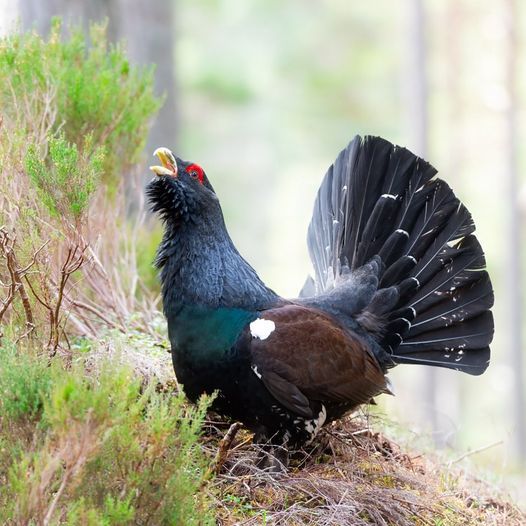
Western Capercaillie aka Cock-of-the-Woods aka Woodgrouse (Tetrao urogallus), male displaying, family Phasianidae, order Galliformes, Scotland
photograph by Paul Cameron Images
456 notes
·
View notes
Text



Photo source 1
Photo source 2
Map source
#poll#birds#western capercaillie#galliformes#phasianidae#tetrao#tetrao urogallus#eurasia#asia#europe
45 notes
·
View notes
Text

[965/10,977] Black-billed Capercaillie - Tetrao urogalloides
Order: Galliformes
Family: Phasianidae
Subfamily: Phasianinae
Photo credit: Purevsuren Tsolmonjav via Macaulay Library
#birds#Black-billed Capercaillie#Galliformes#Phasianidae#Phasianinae#Tetrao#birds a to z#undescribed
121 notes
·
View notes
Text

Western Capercaillie
13 notes
·
View notes
Text

Western Capercaillie (Tetrao urogallus) - Zoo Santillana del Mar, Cantabria, Spain
3 notes
·
View notes
Text
Cryptotaxonomy Tournament: Lagomorpha
Note: these creatures do not actually exist. The following descriptions are facetious


Lepus antilocapra. This rabbit species, known as the Jackalope, has antlers on its head.
Tetrao lepus pseudo-hybridus rarissimus L. This rabbit species, known as the Skvader, has the wings and tail of a grouse.
#animals#biology#polls#poll tournament#cryptozoology#cryptids#mythology#rabbits#jackalope#skvader#Lepus antilocapra#Tetrao lepus pseudo-hybridus rarissimus L#0x1v0x6#Cryptotaxonomy Tournament#Cryptotaxonomy Tournament Round 1
124 notes
·
View notes
Text

Capercaillie / Urogallo / Tetrao urogallus /. Finland.
By David Vilas Prat
#david vilas prat#photographer#flickr#capercaillie#bird photography#urogallo#tetrao urogallus#nature#winter#snow#finland
48 notes
·
View notes
Text
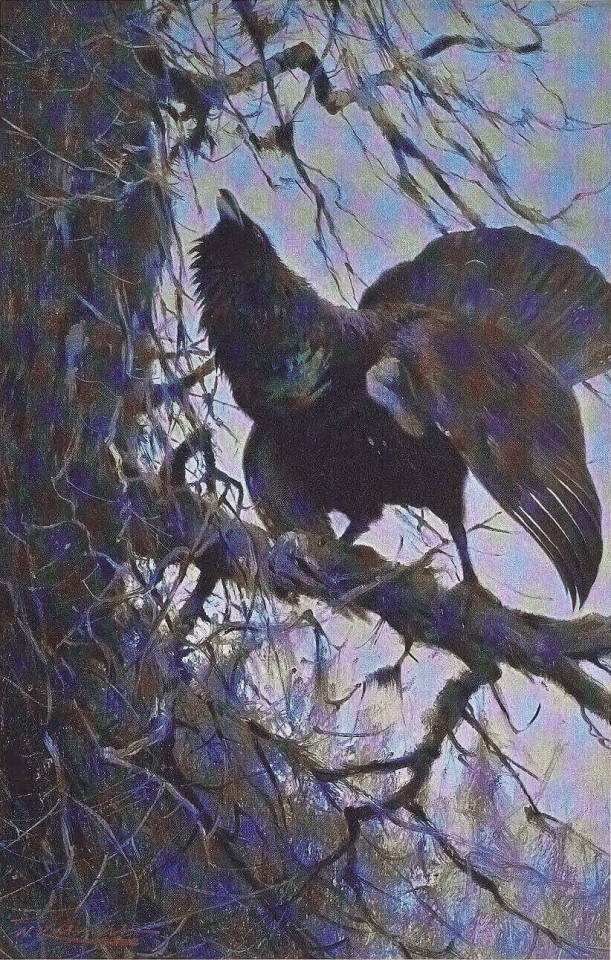
Capercaillie (Tetrao urogallus) | Animal portraiture (1912) | Biodiversity Heritage Library | Flickr | Public domain
7 notes
·
View notes
Text
Critter fact #92:


Daily critter fact #90: The capercaillie (Tetrao urogallus), a European game bird, is the largest member of the grouse family.
11 notes
·
View notes
Text
UROGALLO COMÚN
TETRAO UROGALLUS
NOMBRE CIENTÍFICO: TETRAO UROGALLUS
LONGITUD: 80 A 115 CM.
PESO: 4 A 4,5 KILOS.
PLUMAJE: DIFERENTE SEGÚN EL SEXO.
MIGRACIÓN: NO MIGRATORIO.
ESTADO: MENOR RIESGO.
UBICACIÓN: NORTE, OESTE Y SUR DE EUROPA, OESTE A CENTRO DE ASIA.
ESTE UROGALLO DE CUERPO FUERTE QUE VIVE DENTRO Y EN LAS MÁRGENES DE BOSQUES, DEPENDE CASI POR COMPLETO DE LAS PIÑAS DE PINO PARA OBTENER SU ALIMENTO DE…

View On WordPress
0 notes
Text
Process was also notable for its power source, the Spine, which thanks to Torvah was both ahead of its time and actually gentle to the helms powering it; the original generator design allowed trolls to easily link up and leave it at will.
Process in exchange would assist them with something they wanted as thanks for lending their psiionic energy.
1 note
·
View note
Photo

Western Capercaillie
52 notes
·
View notes
Text
Disney Villains as Birds
This idea just came in mind combining two fields I’m interested. Not just looking for the color but appearance, feeling and behavior also matters.
Very personal opinion you may disagree but friendly discussion welcomed :)
HERE WE GO!
Hans: Blue-breasted Fairywren (Malleus pulcherrimus)
Very cute and pretty-looking bird! Known for their unique courtship of delivering petals.
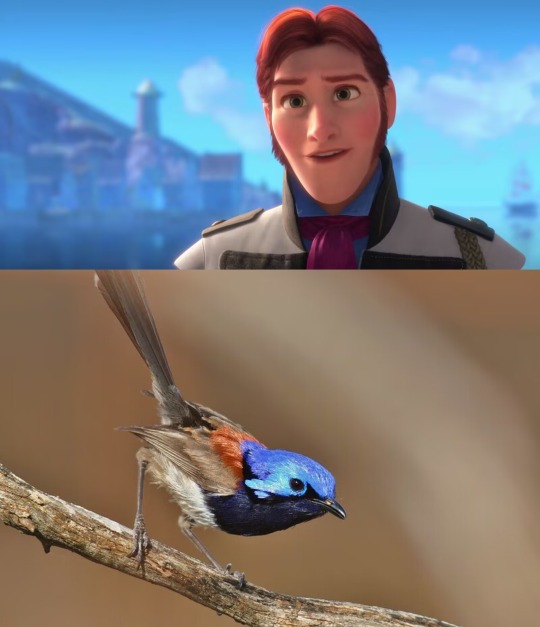
©Disney
©Laurie Boyle
Judge Claude Frollo: Demoiselle Crane (Grus virgo)
#That Hair

©Disney
©salis-
Hades: Steller’s Jay (Cyanocitta stelleri)
HE HAS TO BE A CORVIDAE. And just look at that hairstyle and that…eyebrows?

©Disney
©Daniel Plumer
Queen of Hearts: Papyrus Gonolek (Laniarius mufumbiri)
Fun fact: Like shrikes, they impale their prey on thorns.
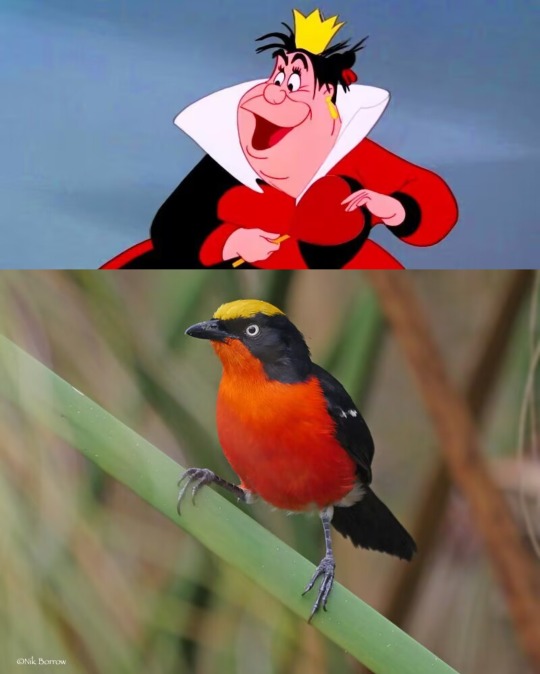
©Disney
©Nik Borrow
Queen Grimhilde: Black-shouldered Kite (Elanus axillaris)
Fairest bird of all

©Disney
©I Am birdsaspoetry.com
Jafar: Bearded Vulture (Gypaetus barbatus)
One of my fav. Now Iago has someone his same class.

©Disney
©pilot_micha
Yzma: Lesser Florican (Sypheotides indicus)
#THAT EYELASH

©Disney
There’s no copyright restriction on the other pic from website so I guess I’m good.
Cruella De Vil: Houbara Bustard (Chlamydotis undulata)
She would see the bird as her greatest accessory.

©Disney
©Frank Vassen
Dr. Facilier: Long-tailed Glossy Starling (Lamprotornis caudatus)
The metallic effect of their plumage just matches Facilier’s shadow power and colorful effects made by his friends on the other side.
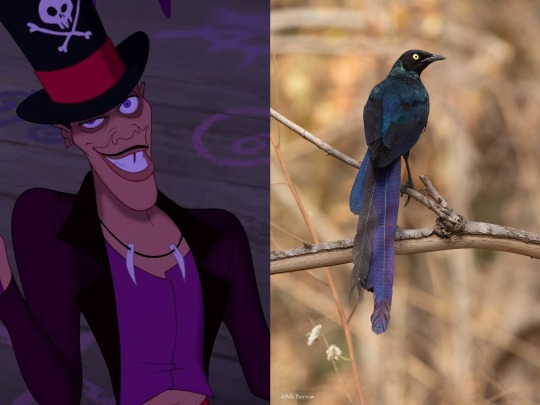
©Disney
©Nik Borrow
Mother Gothel: Long-tailed Paradise Whydah (Vidua paradisaea)
Known to be brood parasites like cuckoos.
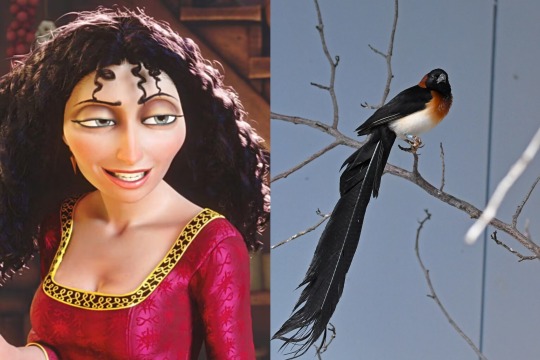
©Disney
©Brian Henderson
Gaston: Western Capercaillie (Tetrao urogallus)
No one makes that mating call like Gaston!
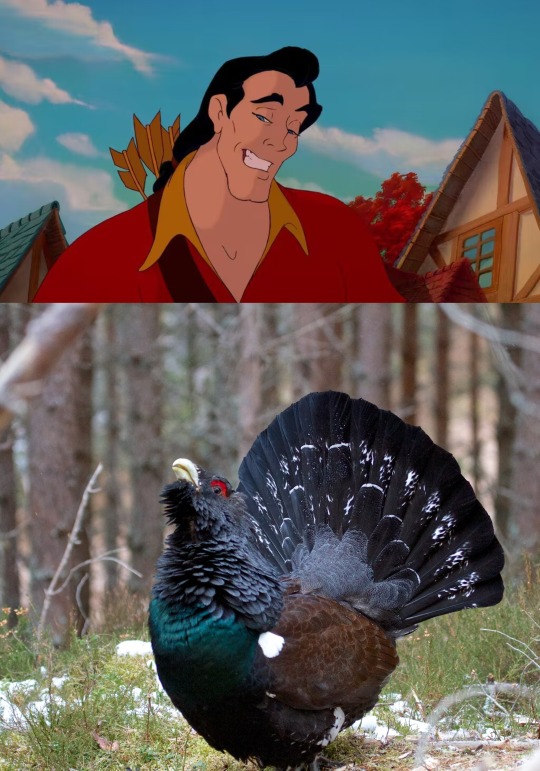
©Disney
©sighmanb
Ursula: Peruvian Pelican (Pelecanus thagus)
Those who couldn’t pay their price were devoured, FOR SURE
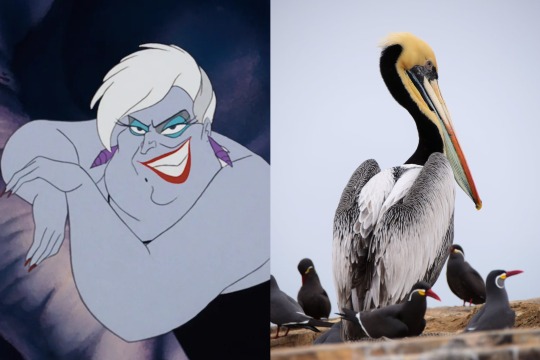
©Disney
©Rogerio Camboim S A
Maleficent: Common Raven (Corvus corax)
Need I say more?
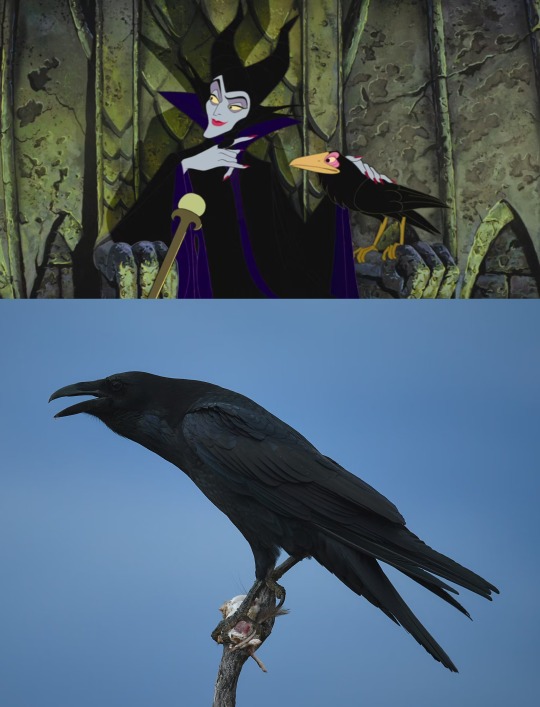
©Disney
©Henry
Captain Hook: Magnificent Frigatebird (Fregata magnificens)
Obviously

©Disney
©Andy Morffew
Lady Tremaine: Ruff (Calidris pugnax)
Her daughters would LOVE this outfit
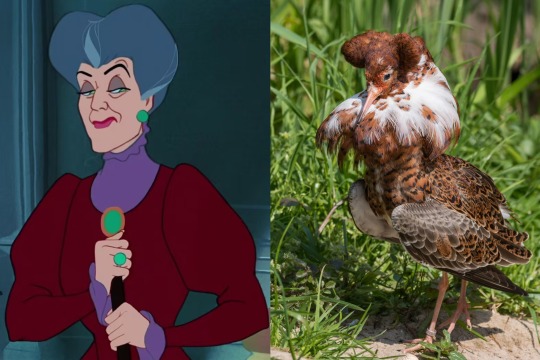
©Disney
©Mibby23
THANKS SO MUCH FOR READING!
BONUS: Kuzco

©Richard Gibbons
#disney villains#birds#prince hans#judge frollo#hades#queen of hearts#evil queen#jafar#yzma#cruella de vil#dr. facilier#mother gothel#gaston#ursula#maleficent#captain hook#lady tremaine#did tons of research on this#So tired omg going to bed#emperor kuzco#kuzco#Bro got turned into a bird this time
376 notes
·
View notes
Photo

The Skvader (Tetrao lepus pseudo-hybridus rarissimus L.) is a Swedish cryptid made up by a man named Håkan Dahlmark in 1874, and later constructed by taxedermist Rudolf Granberg in 1918. It’s a combination of a European Hare and a Wood Grouse. It was formerly displayed at the Biologiska Museet which is listed as Permanently Closed sooo I have no idea where it is…… 🫥
ANYhoo just to explain why it’s more cartoonish - I went into this one planning on using it for 2022’s paper ornament.
[Fun fact: Fall is my favorite season and I’d never seen the leaves change color in person because “Florida”.]
#skvader#cryptid#rabbit#european hare#wood grouse#swedish#fall#autumn#leaves#art#tiinasart#tiinasaurusart
791 notes
·
View notes
Text
Cryptotaxonomy Tournament: Results of Round 1

The two biggest landslides were Homo sapiens cognatus (bigfoot) beating Gigantes (giants) (60.35%, 137 to 90 votes) and Plesiosauria (lake monsters) beating Sauropoda (Mokele-mbembe) (76.84%, 302 to 91 votes).
The two closest matches were Lepus antilocapra (jackalopes) beating Tetrao lepus pseudo-hybridus rarissimus L (skvader) (57.51%, 333 to 246 votes), and Unicornis beating Pegasus (53.6%, 290 to 335 votes).
Had those two close matches tied, I would have advanced the Wolpertinger and the Alicorn respectively.
Round 2 starts today!
#Given the winners#the two sides of the bracket are now Scotland vs America#animals#biology#polls#poll tournament#cryptozoology#cryptids#mythology#Cryptotaxonomy Tournament#Cryptotaxonomy Tournament Announcements
21 notes
·
View notes
Text


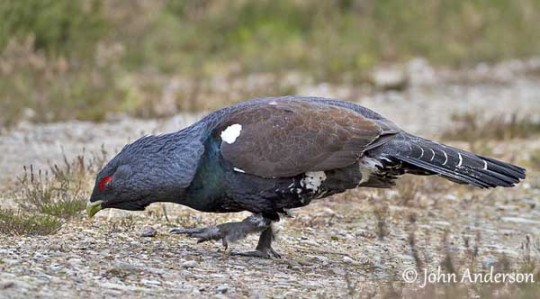




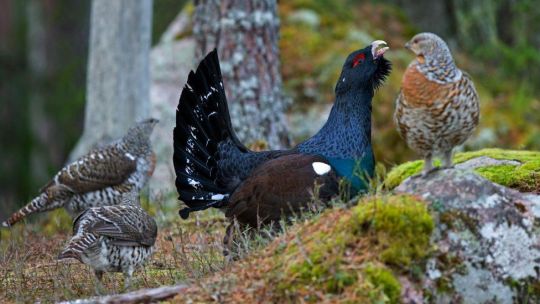


The western capercaillie (Tetrao urogallus), also known as the Eurasian capercaillie, wood grouse, heather cock, cock-of-the-woods, or simply capercaillie is a species in the grouse family which is endemic to the taiga and boreal forest of Northern Eurasia, from Scotland in the west to Russia in the east. They are typically diurnal ground dwelling birds which while capable of flight, are fairly clumsy in the air due to there short rounded wings. While taking off they produce a sudden thundering noise that deters predators. At night they rest in the horizontal branches of tree stands or within thick ground cover such as bushes and sedges, emerging during the day to feed upon seeds, buds, leaves, berries, insects, grasses, and conifer needles. Capercaillies are themselves eaten by wolves, lynx, foxes, eagles, martens, bears, boar, goshawks, and owls. With females reaching around 21- 25 inches (54- 64 cms) long & 3.5 to 5.8lbs (1.5 to 2.5kg) in weight while the male can reach 29 to 40 inches (74 -100cms) long and 9lbs to upwards of 15lbs (4 to 7kg) in weight, the western capercaillie is one of the most size sexually dimorphic living bird species, only exceeded by the larger types of bustards and a select few members of the pheasant family. The females upper parts are brown with black and silver barring; on the underside they are more light and buffish yellow. While the males are dark grey to dark brown, with the breast feathers being dark metallic green. The belly and undertail coverts vary from black to white. Both sexes have a white spot on the wing bow. They have feathered legs, and their toe rows of small, elongated horn tacks provide a snowshoe effect enabling them to traverse thick snow with ease. The breeding season begins in March or April and lasts until May or June. Three-quarters of this long courting season is mere territorial competition between neighboring cocks or cocks on the same courting ground. Towards the end of the courting season the hens arrive on the courting grounds, at which time the dominate cock or cocks flies to an open space nearby and continuously displays. If impressed one or more hens will approach and be mounted. Females will lay 3 to 12 eggs over a 10 day period, which she will incubate for 26 -28 days until hatching. The young will remain with there mother for around 3 months, Under ideal conditions a western capercaillie may live upwards of 18 years.
#pleistocene#pleistocene pride#pliestocene pride#pliestocene#cenozoic#capercaillie#western capercaillie#wood grouse#eurasian capercaillie#bird#birds
40 notes
·
View notes